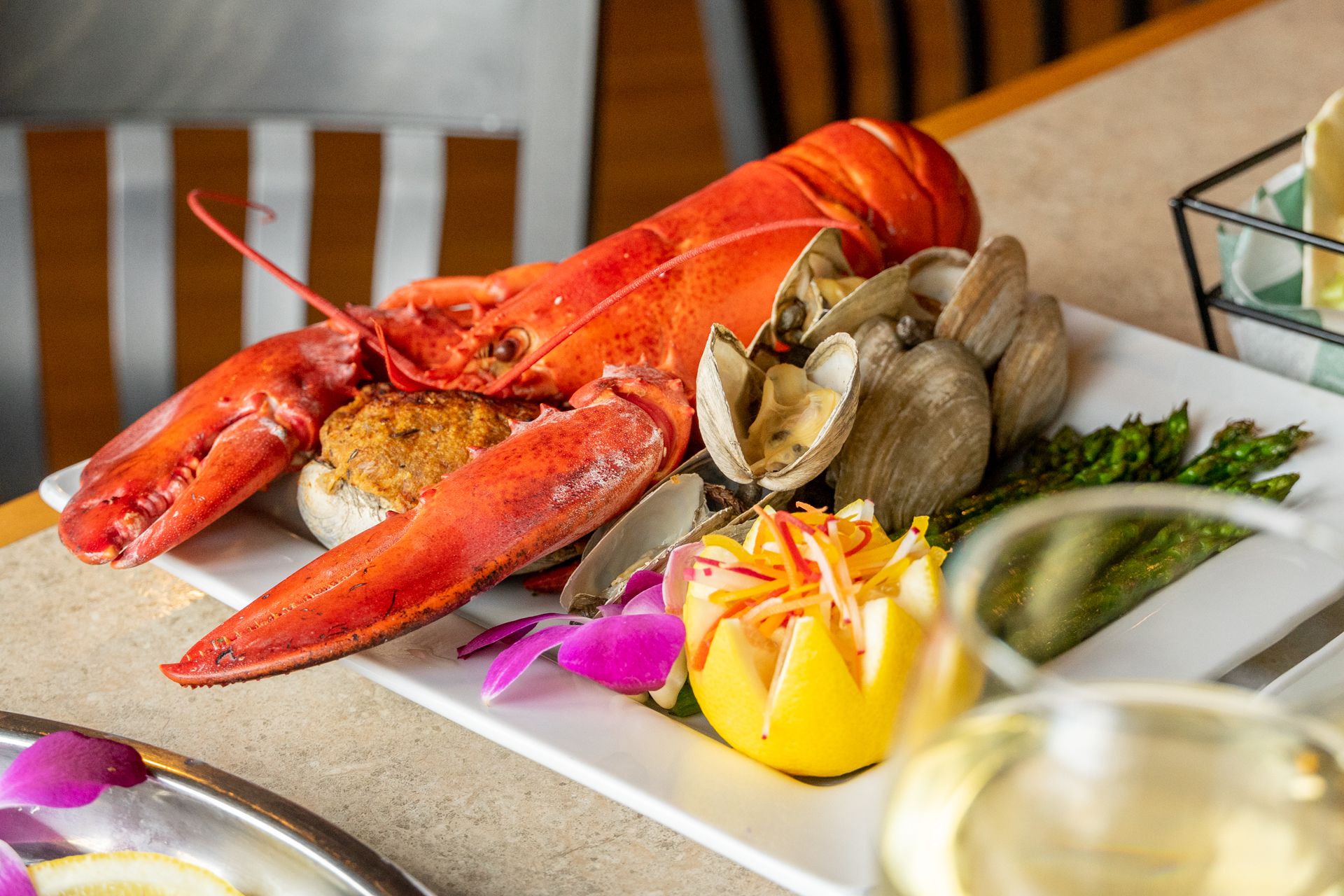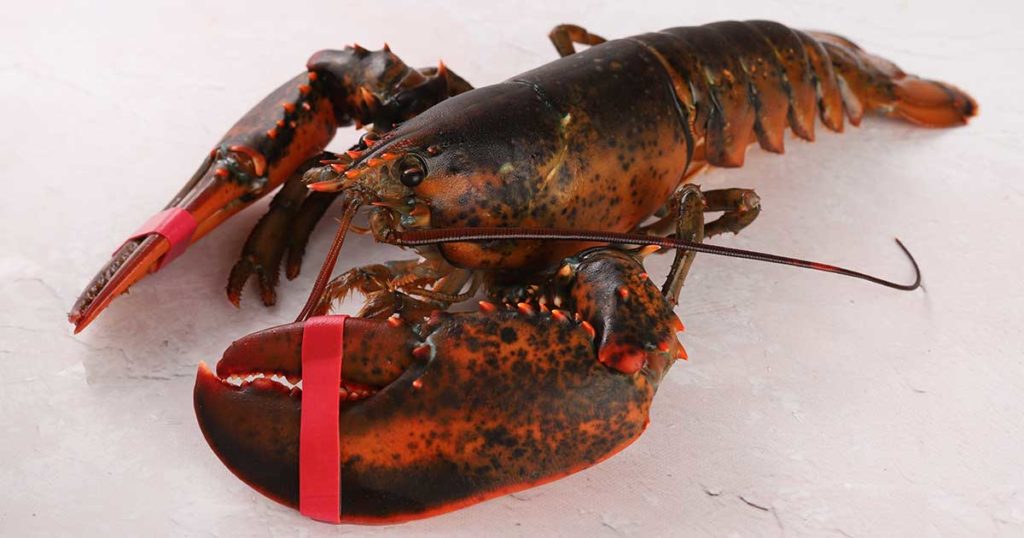If you’ve never cooked a lobster before, it may feel intimidating; but cooking live lobster isn’t difficult. You’ll feel ready for your next lobster bake after reading this. It tells you everything you need to know about cooking live lobster.
Lobster is one of the great culinary treats that many people look forward to indulging in. However, live lobster often must be stored for some time before cooking and eating This leaves many home cooks wondering – can you still eat lobster that’s been kept refrigerated overnight?
The short answer is yes, lobster can be stored overnight and safely consumed if done properly. However, there are some important guidelines to follow for keeping lobsters overnight to ensure they remain fresh, delicious, and safe to eat.
In this article we’ll provide a complete guide to storing lobsters in the refrigerator overnight. You’ll learn how long they can survive the best storage methods, what to look for in freshness, and how to know if your refrigerated lobster is still good to eat.
How Long Can Live Lobsters Survive Out of Water?
Lobsters are aquatic creatures that cannot survive indefinitely out of water. However, they can survive out of water for 24-36 hours if kept cold and moist. The key is recreating the conditions of their natural ocean habitat as closely as possible.
When removed from water, lobsters will slowly use up the oxygen stored in their blood. Cooler temperatures help reduce their metabolism and prolong survival. Proper moisture prevents dehydration.
With ideal refrigerator storage, live lobsters can easily go overnight and remain lively up to 24 hours. Much beyond that time frame, health and survival rates drop off quickly.
Proper Refrigerator Storage Overnight
To store lobster overnight, the refrigerator is the best place. Here are the proper storage steps:
-
Keep lobsters cold but not frozen. Ideal is 34°F-40°F.
-
Use a container that allows air circulation. Don’t seal in plastic bags.
-
Line container with damp newspaper, seaweed, or towel. Avoid direct ice contact.
-
Place container on bottom shelf in very back for coldest spot.
-
Check on lobsters every 8-12 hours. Watch for signs of distress.
-
Cook immediately if lobsters appear lifeless or foul odor present.
What To Look For With Fresh Live Lobster
When selecting and storing live lobster overnight, look for these signs of freshness:
-
Lively, active lobsters that curl and flex their tails when handled
-
Claws that snap and grasp when touched
-
Solid, rigid shells without cracks or punctures
-
Clear, shiny eyes without cloudiness
-
Bright red/purple/blue coloration on joints and underside
-
Seaweed-like odor, no strong fishy or ammonia smell
Signs Your Refrigerated Lobster May Be Bad
While properly stored lobsters can last overnight, there are a few warning signs that your lobster may have expired:
-
Very slow reactions and movement when handled
-
Weak grip strength in claws
-
Soft, mushy spots on shell or tail
-
Milky, cloudy appearance in eyes
-
Strong sour, fishy or ammonia odor
-
Black spots or discoloration on shell
-
Tail meat appears soggy orslimy
If you notice any of these signs, it’s best to discard the lobster and not consume it.
Serving Lobster Stored Overnight
Lobsters that have been properly stored overnight can be cooked and consumed once you’re ready. Here are some serving tips:
-
Inspect each lobster before cooking. Discard any with foul odors or poor movement.
-
Cook lobsters immediately after removing from refrigerator. Don’t let sit out.
-
Plunge cooked lobsters into ice bath to stop carryover cooking.
-
Check that meat is pearly white and firm, not mushy.
-
Serve lobster chilled within a few hours for best quality.
-
Reheat gently in warm butter or sauce to prevent overcooking.
-
Refrigerate leftovers and consume within 2 days.
Tips for Preparing Live Lobster Before Refrigerating
To give your live lobsters the best shot at surviving overnight:
-
Select active, healthy lobsters showing signs of life
-
Transport lobsters home in a cooler with cold packs
-
Keep lobsters moist with wet newspaper or seaweed
-
Store upright and don’t stack or overcrowd in container
-
Remove rubber bands on claws to allow free movement
-
Rinse debris from shells but don’t scrub or soak in water
-
Place lobsters in refrigerator as soon as possible
FAQs on Eating Lobster Refrigerated Overnight
Here are answers to some common questions on consuming lobster after overnight refrigerator storage:
Can I keep live lobster for 2 days in the fridge?
It’s riskier going much beyond 24 hours. Make sure to check frequently for signs of life. Cook and eat within 36 hours maximum.
What if my lobster dies overnight in the fridge?
Unless there is a strong foul odor, it should be safe to cook and consume within 24 hours of death. Discard anything with a poor appearance or odor.
Is it safe to eat lobster that’s soft or mushy after refrigerating?
No, any lobsters with soft spots on the shell or tail are past their prime and should be discarded. Only eat firm, opaque pearly lobster meat.
Can I freeze a live lobster to store overnight?
No, freezing can quickly kill a live lobster and should be avoided. Refrigeration at 34°F-40°F is ideal for overnight storage.
What’s the best way to keep cooked lobster overnight?
For cooked lobster meat, pick out of the shell and store in an airtight container in the refrigerator, submerged in butter or olive oil. Eat within 2 days.
Enjoy Your Freshest Lobster Feast
Part of the joy of cooking lobster is using the absolute freshest specimens possible. With proper overnight refrigeration, you can now keep those live lobsters at peak quality until you’re ready to prepare that sensational seafood meal. Just be diligent in monitoring their health and freshness.
Follow our overnight storage guide to keep lobsters alive, happy, and delicious. Then get ready to savor mouthwatering lobster, even on a delayed timetable. Just remember, once you crack open those bright red shells after refrigerating, inside you should find sweet, succulent meat that’s well worth the wait.

How to handle live lobsters
Cooking live lobsters isn’t the only intimidating part about them: they’re alive and those claws are pretty scary!
Never fear: at Pine Tree Seafood, we ensure your safety by “banding” the lobster claws before you purchase. When you order live lobsters, you’ll find their claws are held shut with strong rubber bands.
It’s best to leave the bands on, despite the temptation otherwise. The pincher claws can draw blood quickly and cause infection. With their strong “slow twitch” muscles, the crusher claws can easily break finger bones and won’t let go until the lobster dies or the claw is taken off its body.
When moving a lobster, you should always pick it up by the body, which is the big back shell behind the head. Never pick it up by the tail. When the lobster is picked up, it will automatically arch its body, wave its claws, and/or flap its tail wildly. The needle-sharp edges and spines can cut you.
What to do if your lobster dies
Should they die and you’ve kept them cold, you can still cook them.
Experts from the State of Maine say that dead lobster can be eaten safely up to 24 hours after it dies as long as it is kept in the fridge at or below 38°F, which is the temperature of a typical home refrigerator.
If the lobster smells bad, like sulfur or ammonia, or if the tail meat is soft, it’s gone bad. Throw it away immediately.

